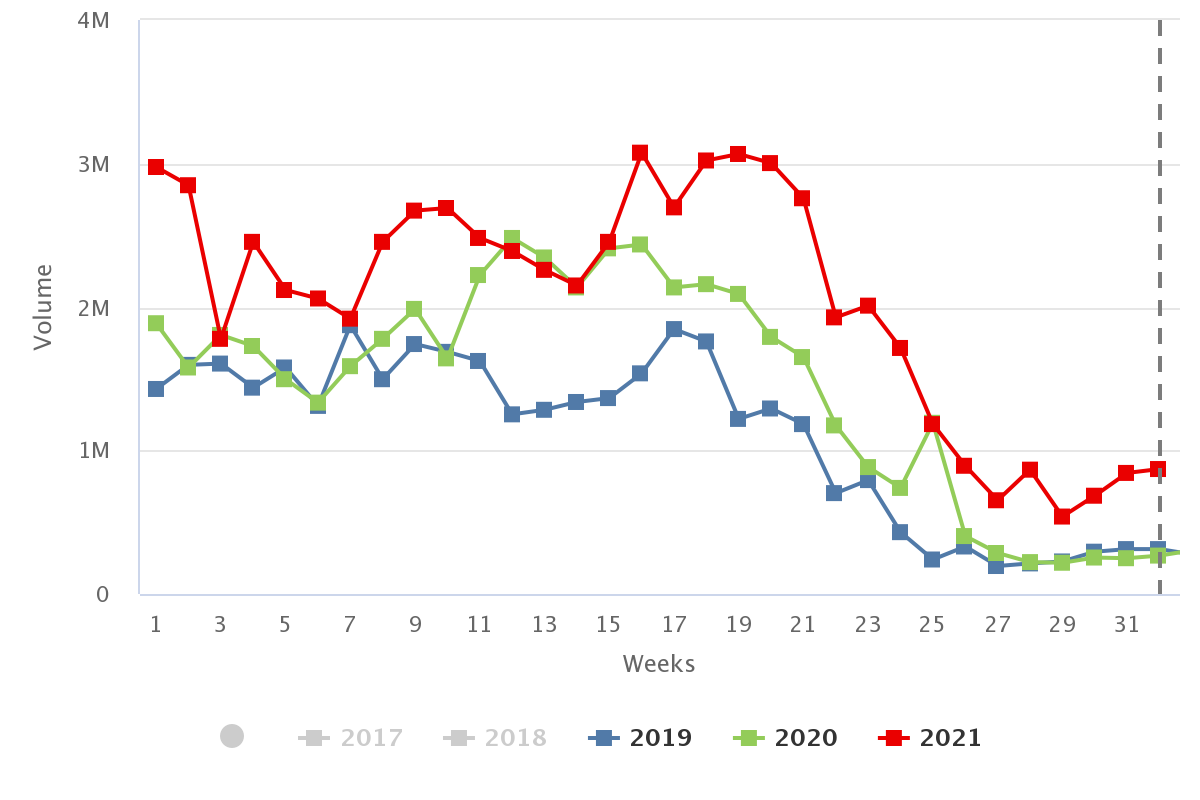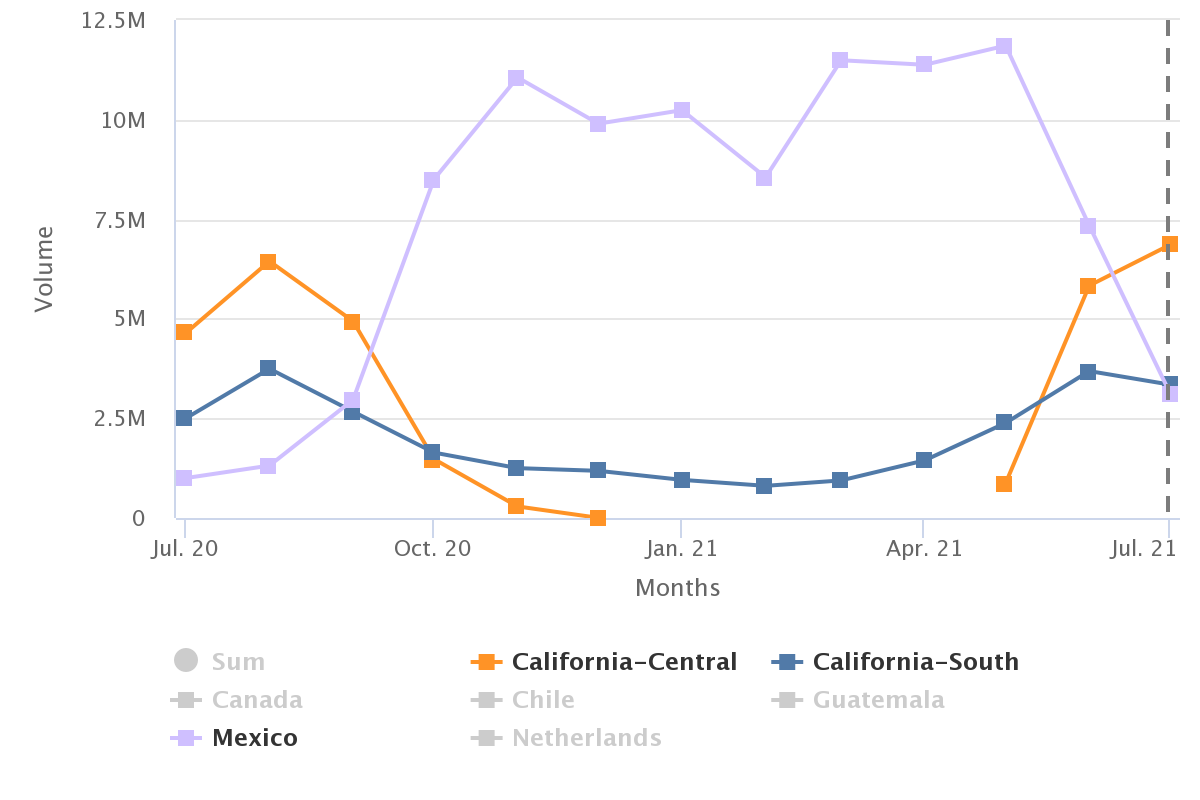Mexican raspberry exports increased by double digits in the first half of 2021

Overview of the Mexican raspberry supply, complemented by charts from Agronometrics. Original published on August 17, 2021.
Source: USDA Market News via Agronometrics.
(Agronometrics users can view this chart with live updates here)
Mexico has exported its raspberries to 33 countries located in America, Europe, Asia, and Oceania, such as Canada, the Netherlands, Russia, Japan, Saudi Arabia, Belgium, Hong Kong, Ireland, and Kuwait, although the main buyer is the United States.
In 2019, Mexico was the world’s second-biggest producer of raspberries, with 128,848 tons and, since then, its production has continuously increased by double-digits. In 2020, the country produced 146,343 tons, i.e. 13.6% more than in the previous year.
Source: USDA Market News via Agronometrics.
(Agronometrics users can view this chart with live updates here)
Likewise, foreign sales increased by 21.1% from 2019 to 2020, going from 912.4 million dollars to 1,104.9 million dollars.
Jalisco is Mexico’s main producer of raspberries, with 104.80 tons. It is followed by Michoacan, with 28,895, and Baja California with 10,222 tons.
The country’s annual per capita consumption stands at 0.3 kilograms and this product accounts for 0.5% of the national fruit production.
Recently, Arab nations expressed their interest in importing Mexican berries, as well as mango, avocado, tomato, and pepper, among other products.
The News in Charts is a collection of stories from the industry complemented by charts from Agronometrics to help better tell their story.
Access the original article with this (Link)








